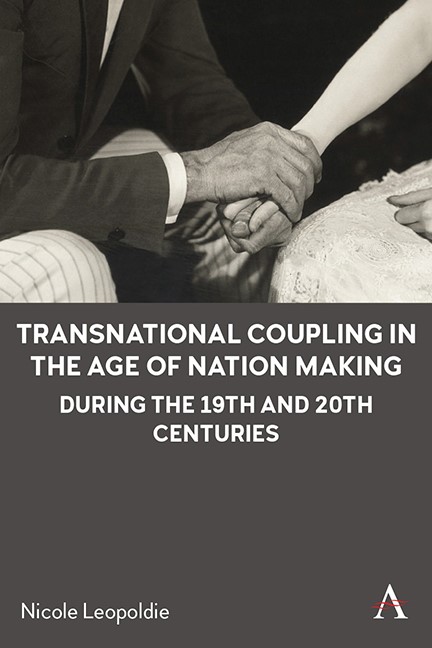Book contents
- Frontmatter
- Contents
- List of Figures
- Acknowledgements
- Introduction Marriage: National Borders and Personal Spaces
- Part I “Trading Titles for Treasure?”: Elite Marriages during the Nineteenth Century
- Part II “Paris is Free—and So Are Its Kisses”: Wartime Marriages during the Twentieth Century
- Conclusion
- Bibliography
- Index
4 - Transnational Courtship in Spaces of War
Published online by Cambridge University Press: 15 November 2023
- Frontmatter
- Contents
- List of Figures
- Acknowledgements
- Introduction Marriage: National Borders and Personal Spaces
- Part I “Trading Titles for Treasure?”: Elite Marriages during the Nineteenth Century
- Part II “Paris is Free—and So Are Its Kisses”: Wartime Marriages during the Twentieth Century
- Conclusion
- Bibliography
- Index
Summary
Throughout, this study has built upon Wen-Shan Yang and Melody Chia-Wen Lu’s concept of transnational marriage, which successfully situates the concept of cross-border marriage within a context of wider transnational processes by placing the analytical focus on the transnational networks and spaces from which marriages emerged. Based on that working definition, in the case of wartime marriages during the twentieth century, the relative absence of a transnational community or social network among marriage participants, such as that which produced elite marriages in the nineteenth century, creates a methodological imperative to locate and define new transnational spaces that were created during the world wars. Therefore, in what follows, the focus shifts from wartime othering as an emotional process to a spatial analysis of transnational courtship and marriage.
This chapter is divided into four parts. In the first part, I attempt to locate and trace transnational cultural formation across and within multiple sites of wartime encounter by examining where and how soldiers and local women met and courted one another. Here, I argue that because most couples did not share a common language, other forms of mediated cultural cues, such as dancing, provided the translinguistic means of communication that became important cultural devices in courting rituals and transnational coupling. In this fashion, public dances, like those organized by the American Red Cross, came to serve as one of the most important examples of wartime transnational spaces that produced Franco-American marriages. In the second part of this chapter, I further explore subsequent courtship rituals among participants as well as the important role of their families in the cultural negotiation of these spaces. Finally, the third and fourth parts of this chapter examine how those transnational spaces of courtship and marriage existed in opposition to national spaces. Through an analysis of the conditions and frameworks that transnational couples had to navigate in order to form recognized matrimonial unions, I argue that state and military regulations, as well as the national criticisms of wartime Franco-American marriages further solidified participants’ conceptions of the national borders that they attempted to cross.
- Type
- Chapter
- Information
- Transnational Coupling in the Age of Nation Making during the 19th and 20th Centuries , pp. 117 - 140Publisher: Anthem PressPrint publication year: 2023



